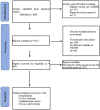Gender differences in borderline personality disorder: a narrative review
- PMID: 38283847
- PMCID: PMC10811047
- DOI: 10.3389/fpsyt.2024.1320546
Gender differences in borderline personality disorder: a narrative review
Abstract
Borderline personality disorder (BPD) is a severe and complex mental disorder that traditionally has been found to be more frequent in the female gender in clinical samples. More recently, epidemiological studies have provided conflicting data about the prevalence of borderline disorder in the two genders in community samples. In order to explain this heterogeneity, some authors hypothesized the presence of a bias in the diagnostic criteria thresholds (more prevalent in one gender than another), in the population sampling (community versus clinical), in the instruments of evaluation (clinician versus self-report measures), and in the diagnostic construct of BPD. Beyond the question of the different prevalence of the disorder between genders, the debate remains open as to how personality and clinical characteristics, and attitude toward treatments express themselves in the two genders. This narrative review is aimed to provide an updated overview of the differences among genders in BPD in terms of diagnosis, temperamental and clinical characteristics, comorbidities, findings of neuroimaging, and treatment attitudes. Studies that specifically investigated the gender differences in BPD patients are rather limited. Most of the investigations did not consider gender as a variable or were characterized by a significant imbalance between the two genders (more commonly in favor the female gender). The main results indicated that men were more likely to endorse the criteria "intense and inappropriate anger" and "impulsivity," whereas women endorsed the criteria "chronic feelings of emptiness," "affective instability," and "suicidality/self-harm behaviors." These findings reflect differences in temperament and symptoms of the two genders. Other relevant differences concern pattern of comorbidity, specific neurobiological mechanisms and attitude to treatments. Main limitations were that only one database was searched, time of publications was limited, non-English manuscripts were excluded, and the quality of each paper was not commented.
Keywords: borderline personality disorder; diagnosis; gender differences; neuroimaging; psycopathology; symptoms; temperament; treatment.
Copyright © 2024 Bozzatello, Blua, Brandellero, Baldassarri, Brasso, Rocca and Bellino.
Conflict of interest statement
The authors declare that the research was conducted in the absence of any commercial or financial relationships that could be construed as a potential conflict of interest. The author(s) declared that they were an editorial board member of Frontiers, at the time of submission. This had no impact on the peer review process and the final decision.
References
-
- American Psychiatric Association . Diagnostic and statistical manual of mental disorders fifth edition. Virginia, US: American Psychiatric Association; (2013).
-
- McCormick B, Blum N, Hansel R, Franklin JA, St John D, Pfohl B, et al. . Relationship of sex to symptom severity, psychiatric comorbidity, and health care utilization in 163 subjects with borderline personality disorder. Compr Psychiatry. (2007) 48:406–12. doi: 10.1016/j.comppsych.2007.05.005, PMID: - DOI - PubMed
Publication types
LinkOut - more resources
Full Text Sources


